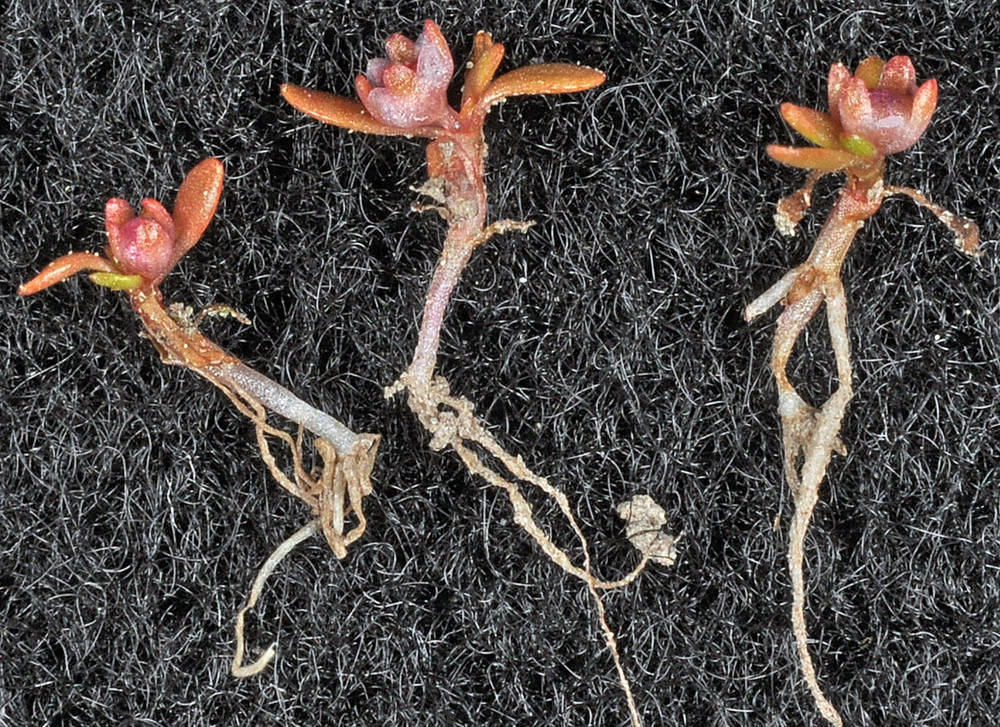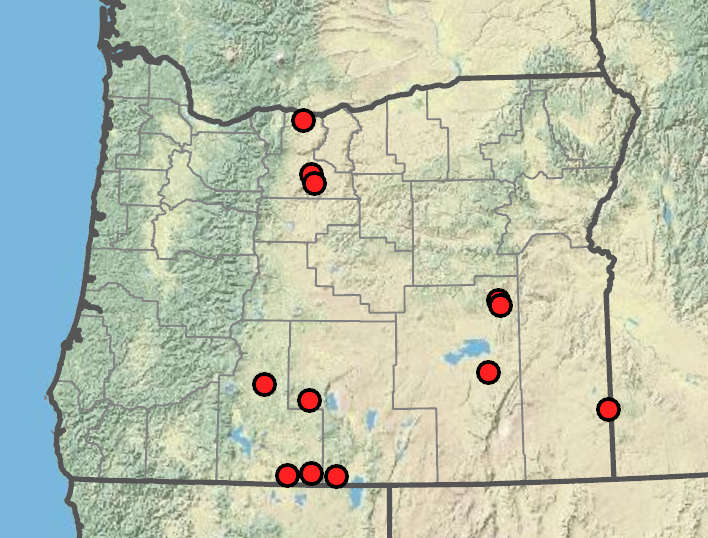Elatine californica
Elatine brachysperma
California waterwort
short-seed waterwort
light green to green (reddish green);
internodes 2–12 mm.
green; average internode length 6–15 mm.
blades spatulate or elliptic, 3–12 mm;
petioles 0.5–6 mm.
blades obovate or obovate-elliptic, 3–8 mm;
petioles average length 0.5–1 mm.
peduncles recurved, usually > 1.5 mm.
peduncles straight; ~0.1 mm.
(0.1)1.5–4 mm;
sepals 4, sometimes 1 smaller;
petals 4;
stamens 8;
carpels 4.
sepals 3;
petals 3;
stamens 3; as long as petals or slightly shorter;
carpels 2–4.
disk-shaped to compressed globose, 4-locular.
globose or pressed globose, 2- to 4-locular.
16–24, highly curved to nearly circular, 0.5–0.7 mm;
surface pits 20–27 per row; length 1.2–2 × their width.
10–45, slightly curved to nearly straight, 0.4–0.5 mm;
surface pits < 16 per row; length 0.5–nearly 1 × their width.
Elatine californica
Elatine brachysperma
In or near puddles, ponds, reservoirs, lakes, and marshes. Flowering Mar–Aug. 50–1600 m. Col, ECas. CA, ID, NV, WA; northeast to MT, southeast to NM, south to Mexico. Native.
Elatine californica can be distinguished from all other Elatine species in the Unites States by its four-merous flower parts and nearly circular seeds. Both morphological and molecular analyses (Razifard et al. 2017) support a close affinity between E. californica and E. hydropiper, which occurs in Central Asia, Europe, and North Africa.
Mudflats near lakes and reservoirs. Flowering Jun–Jul. 1200–1700 m. BR, Owy, ECas. CA, NV, WA; throughout much of western, southern, and central US, Mexico; Argentina. Native.
Elatine brachysperma can be distinguished from other Elatine species growing in Oregon by the number of its seed surface pits, which is fewer than 16 per row. In Oregon, this species is critically imperiled, but it is secure in neighboring states (heritage rank: “G5, S1” [Oregon Biodiversity Information Center, 2016]), e.g., in California.
Hamid Razifard, Gordon Tucker, Donald Les
Hamid Razifard, Gordon Tucker, Donald Les
- Local floras:
CA,
OR,
WA
- Local Web sites:
CalFlora,
CalPhotos,
Flora NW,
PNW Herbaria
WildflowerSearch
iNaturalist (observations)
USDA Plants Database
- LBJ Wildflower Center
- SEINet
- Plants of the World Online
- Encyclopedia of Life
- Wikipedia
- Google Image Search
- Local floras:
BC,
CA,
OR
- Local Web sites:
CalFlora,
CalPhotos,
Flora NW,
PNW Herbaria
WildflowerSearch
iNaturalist (observations)
USDA Plants Database
- LBJ Wildflower Center
- SEINet
- Plants of the World Online
- Encyclopedia of Life
- Wikipedia
- Google Image Search




